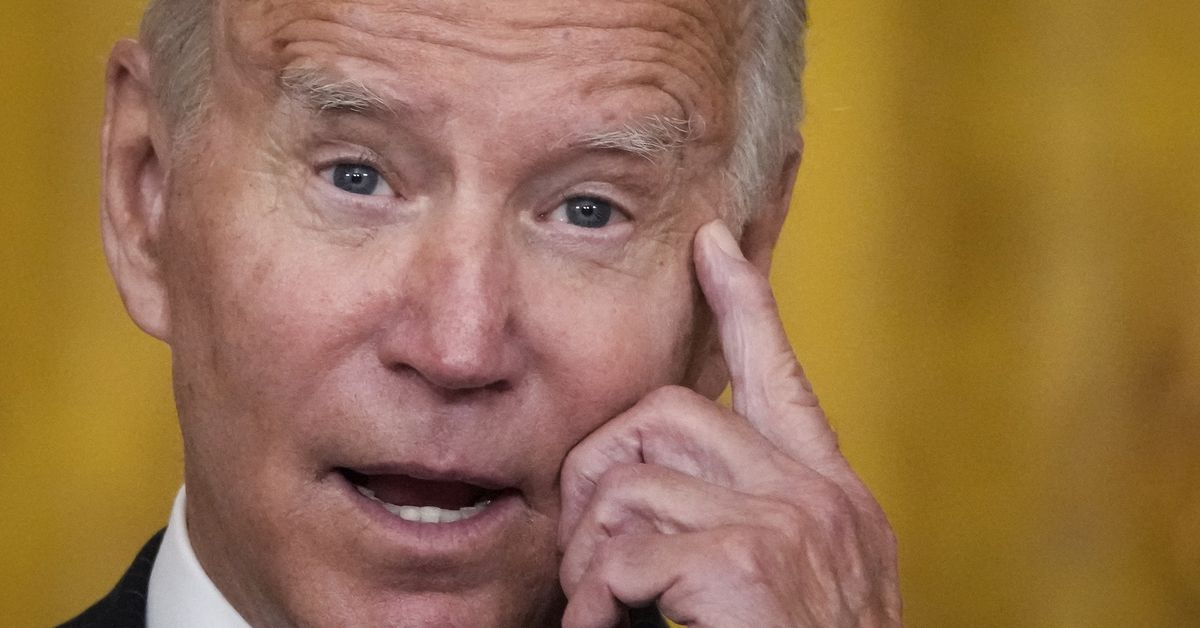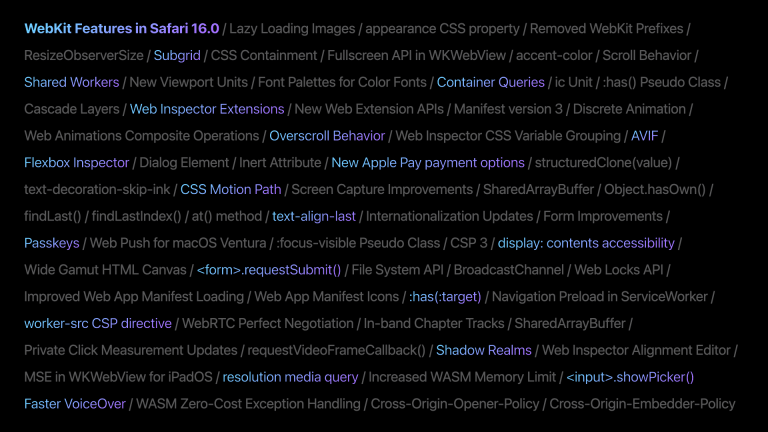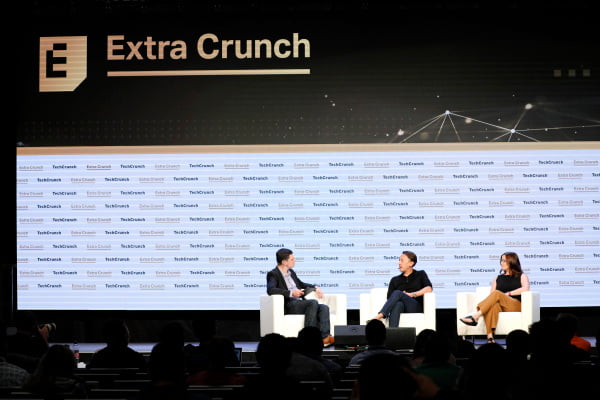
President Biden announced this week that the Port of Los Angeles would operate 24/7 in a bid to address product shortages in the United States. The news arrived in tandem with the Labor Department’s release of data showing that the ongoing supply chain crisis is driving up consumer prices and inflation.
Conservatives are spinning these developments into a tale about how this supply chain catastrophe is ruining Christmas — and it’s all Biden’s fault.
Despite what some people are saying on right-wing news outlets and social media, recent problems with the global supply chain can’t be blamed on Biden alone. As his recent efforts have shown, the president is trying to help. In reality, these shortages and delays are the product of many cross-cutting problems that have existed for years, including the Covid-19 pandemic, rising consumer demand, and a global and highly optimized manufacturing network that doesn’t adapt to change quickly.
As handy as it would be to blame just one person for America’s supply chain woes, the situation and its solutions are far too complex for such an easy explanation. Let’s discuss.
So the supply chain is complex. What does that even mean?
The supply chain is how the global economy produces and delivers the stuff that people buy. It encompasses all the people, companies, and countries that play a role in that process. Technicians at facilities in Taiwan who make computer chips are part of the supply chain, and so are the truck drivers that deliver goods from warehouses to retailers in the US.
Factories that make the plastic used in packaging, cargo ships that move products from Asia to the West Coast, even Amazon’s fleet of jets are all considered part of this incredibly complicated system of global manufacturing that’s been dramatically disrupted in the past couple of years.
How did the supply chain get so messed up?
It’s tempting to blame the pandemic alone for the current supply chain catastrophe, but in some ways, the pandemic merely exacerbated existing problems with global trade and exposed some new ones.
What the pandemic did do was cause factories to shut down, usually because there weren’t enough workers, and that created shortages of products and components. Those shortages led to bottlenecks and delays in product manufacturing (if factories don’t have the parts to build something, it doesn’t get made and doesn’t get shipped).
As more shortages lead to more bottlenecks, the disruption causes problems in other parts of the supply chain, creating even more shortages, new delays, and higher prices. For example, automotive manufacturers haven’t been able to make cars and trucks, because they can’t get their hands on enough computer chips. Ikea can’t ship furniture parts from its warehouses to its stores thanks to the trucker shortage. A supply crunch for petrochemicals has driven up the cost of making anything that includes plastic, including children’s toys.
Who broke the supply chain?
Again, no one person is responsible for upending the global supply chain. Several long-term trends and compounding challenges created the conditions that caused this crisis. US companies have been moving more and more manufacturing abroad for decades, which means a growing amount of the stuff American consumers want to buy needs to be imported. Meanwhile, worsening conditions for truck drivers in the US have made the job incredibly unpopular in recent years, even though the demand for drivers has gone up as e-commerce has become more popular. That means that as Americans relied more on online shopping during the pandemic, getting goods from ports to doorsteps has been challenging.
“It’s 40 years in the making,” Nick Vyas, the director of the Global Supply Chain Institute at the University of Southern California, told Recode. “We allowed supply chains to get away without having contingencies in place, resiliencies in place, and other measures to ensure humanity would never be subjected to this.”
The pandemic made these problems worse, which contributed to the breakdowns in the supply chain we’re now witnessing. While US automakers have imported semiconductor chips from abroad for decades, Covid-19 forced those companies to compete with laptop and phone manufacturers over the same components. As the pandemic pushed many veteran truckers to retire early, new drivers couldn’t earn licenses because trucking schools were closed during lockdown.
Covid-19 has also affected consumer demand — namely, which products they want to buy and how much — creating constant changes that the supply chain just hasn’t been able to keep up with, especially lately.
It seems like we’ve had plenty of time to fix these problems. Why are they suddenly ruining Christmas?
Global manufacturing has been operating at full capacity for more than a year. But without any slack to address worker shortages, bottlenecks, and delays, problems have only piled up. These issues have now reached a critical mass. So even though American consumers have started to order much more stuff, there’s no flexibility in the supply chain to accommodate that demand.
“Delta basically conditioned our behavior to tell all of us that, ‘Hey, this could last a while,’” Ellen Hughes-Cromwick, a senior resident fellow for climate and energy at the think tank Third Way, said. “So we just went out and bought like crazy.”
record number of imports is slowing down product deliveries. Cargo ships carrying holiday merchandise are waiting to unload their stock along the California coast, but there aren’t enough port workers to do the job. Those delays mean there are fewer containers available for manufacturers trying to send more products to the US, which only sets the supply chain back even more.
We can agree that it’s everybody’s problem. But what’s Biden actually doing to fix it?
Pushing the Port of Los Angeles to operate 24/7 is Biden’s most direct action to date, and it’s supposed to ensure that an additional 3,500 cargo ships are unloaded each week. The Port of Los Angeles and the Port of Long Beach, which expanded its operations last month, are responsible for 40 percent of the containers brought into the US, so expanding their operations is supposed to speed up shipping nationwide, the White House says.
The move will help reduce the number of ships waiting to dock, but it only affects the later stages of the supply chain problems: shipping and delivery. Right now, it’s not clear what Biden can do to fix the bottlenecks occurring higher up in the supply chain, like manufacturers running low on components and factories getting shut down abroad. While the White House has convened task forces to address these underlying problems, those efforts probably won’t bear fruit in time for the holidays.
“This is more a demand and supply situation, more so than a government situation,” Patrick Penfield, a supply chain management professor at the University of Syracuse, said. “The government has a role with regulations and enforcing laws, creating laws, and trying to stimulate development. But other than that, they’re powerless as far as how commerce works.”
If Biden can’t fix it, who can?
No one can fix the supply chain challenges before the holidays because they’re too complicated. Factories can’t immediately increase their manufacturing capacity, and more people won’t suddenly receive trucking licenses just because US consumers want to buy more stuff. Severe weather events in Texas, an energy crisis in China, and a fire at a chip factory in Japan have created new hurdles, too.
In the long run, it’s possible that the US government can change policies that contributed to this situation in the first place. Politicians could shift their approach to trade, which has historically encouraged US companies to manufacture products abroad. Improving labor standards might boost working conditions for truckers and factory workers to make those jobs more appealing — boost global vaccine manufacturing and ensure that workers in other countries are safer from Covid-19 outbreaks. Admitting more people into the US could address a shortage of delivery and port workers.
The government could even consider redeploying the Defense Production Act, a Cold War-era law that gives the president certain powers over domestic manufacturing during a crisis. For instance, the US Commerce Department is weighing how to use that law to address the US supply of semiconductor chips.
But these ideas are a reminder that US supply chain policy does not exist in a vacuum. It’s an amalgam of all sorts of broader policy choices that aren’t so easy to change.
When is this all going to end?
Some experts say it will be months before these supply chain problems resolve themselves. Others think these disruptions represent a new normal that could last years. Regardless, there’s no reason to think these issues will be fixed by the holiday season. In fact, the White House has already said there’s no guarantee that packages will arrive on time.
So should we blame Joe Biden for ruining Christmas?
No.





